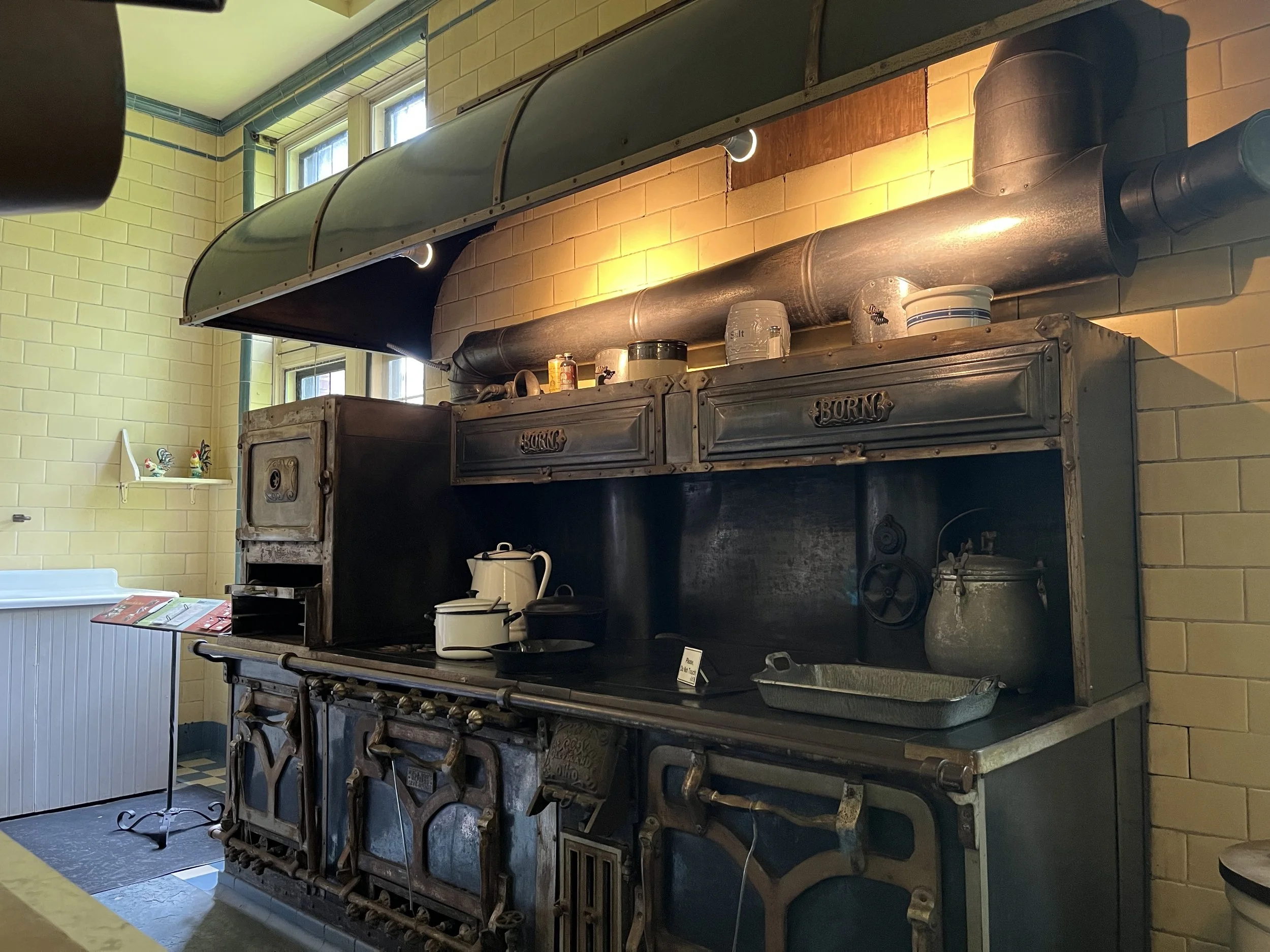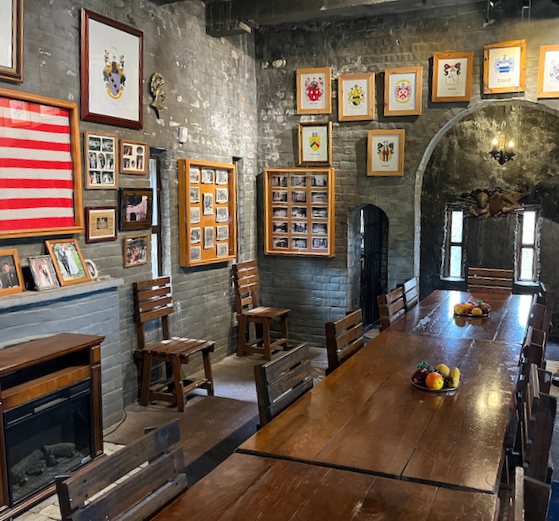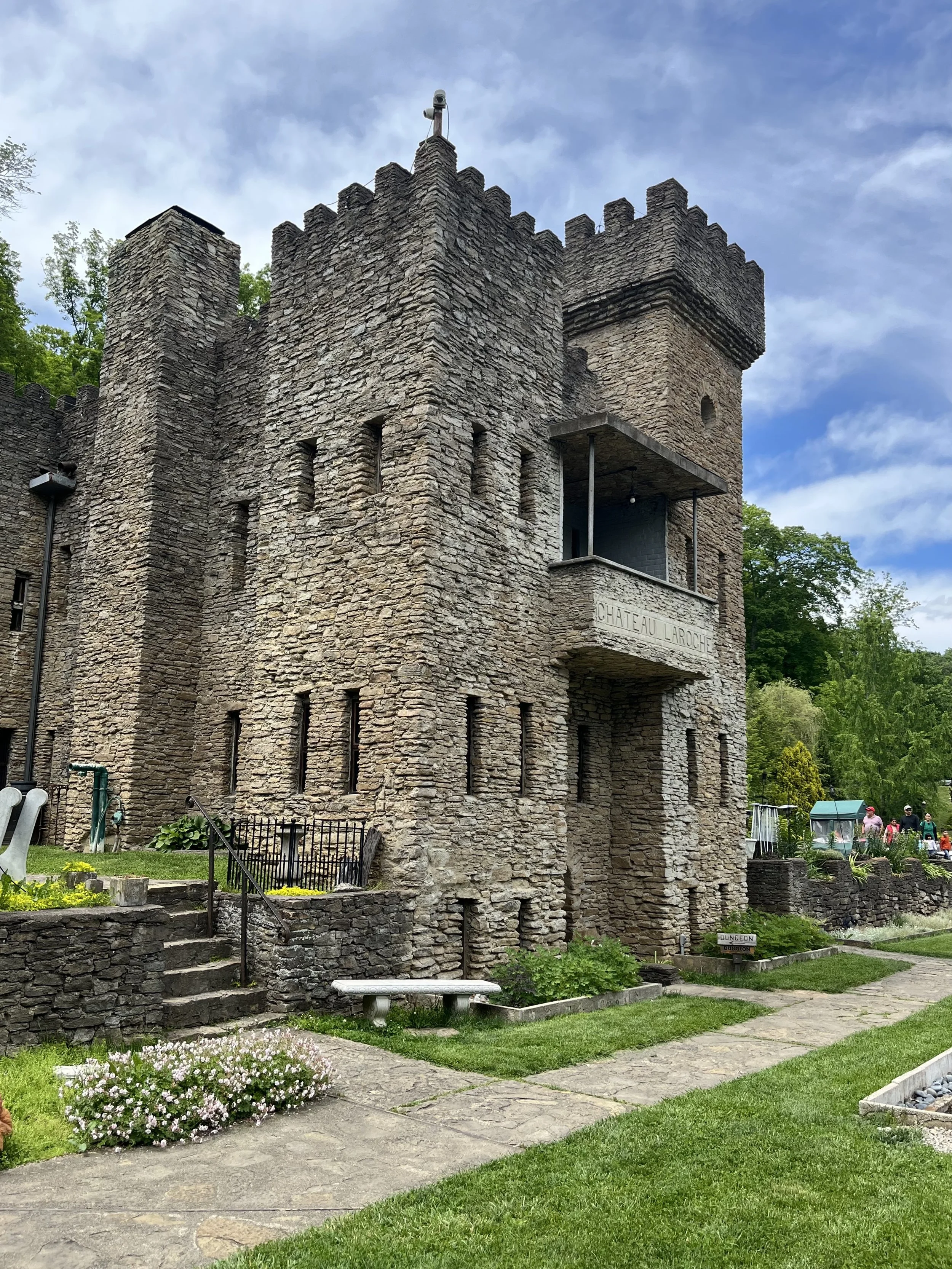Castles a la mode
Ohio has a lot of interesting stuff, ranging from stunning natural wonders at the top of the scale to the dumbfounding and inconceivably unnatural at the bottom. Somewhere halfway down, there are more than a few “castle inspired” homes of various quality. In the last several weeks I had the opportunity to visit two more of them. Both date to the beginning of the twentieth century and are manifestations of fairytale themes and fantastic ideas of what the builders thought the world might have been, but never was.
The first home built in the style of a “castle” is northeast, in the rustbelt industrial city of Akron. The city sprung to life with the Ohio-Erie Canal in the 1830s and is known for a lot of things, including sports ballers LeBron and Steph Curry, mobster Rosario Borgio and the Black Hand assassins, Chrissie Hynde of the Pretenders and Mothersbaugh brothers of the band Devo. The K-12 grade system was invented in Akron, and it’s the center of the tire and rubber industry, especially a century ago.
In 1898, F. A. “Frank” Seiberling, along with his brother Charles, founded the Goodyear Tire and Rubber Company and thought Akron was just the right place to do it. At the peak of Goodyear’s global dominance, F.A. decided he needed to build a castle. After making some trips to Europe to find out what a castle should look like, he set about building a retro-modern 65 room Tudor style monstrosity. The family resided there from 1915 until 1955, when F.A. passed away. The property is now in the custody of the Stan Hywet Hall and Gardens organization and due to the undeniable romantic styling, it hosts weddings on the grounds practically non-stop.
The castle was built in the middle of a many thousand acre reserve and was expertly executed. Only the best materials were used, and every modern feature was included, but concealed so as to maintain the Tudor style and the illusion of old construction.
The great hall has a “vaulted” ceiling, cleverly suspended inside the building. The house has steam radiators throughout, so the fully functional fire place, always cleaned and ready, is really just for show. The bear skin rug is said to be pieced together from three animals.
The music room features a built-in player pipe organ. The pipes are concealed by tapestries on the walls. No need for actual musicians.
The dozens of staff were provided modern dorm style living in the house and all the greatest modern tools to facilitate their duties, like this massive multi-fuel range and oven.
On the other end of Ohio, in the little bedroom community of Loveland, near Cincinnati, the Chateau Laroche, aka “Loveland Castle,” is an example of a similar romantic desire, but executed on a shoestring budget. Unlike Mr. Seiberling ordering craftsmen to work, WW I veteran Harry Delos Andrews began stacking river rocks with mortar in 1929 and by 1955, the same year F.A. died, Harry was ready to move into his castle. He lived there by himself until his death in 1981.
The Loveland Castle overlooks the Little Miami River and features extensive gardens built into the hillside.
Harry built a small tower room for himself, complete with an essential fireplace heat source.
Harry’s great room had enough room for a dozen Knights of the Golden Trail and featured a fireplace, balcony, and kitchenette.
Chateau Laroche is similar in size to actual “tower” castles common in the British Isles, but it’s really a miniature castle replica. It lacks any actual defensive structures, while the counterpart in Akron featured a security wall around the property and a fully staffed gatehouse protecting the family.
The two trips were kind of eye-opening. On the positive side, the castles are the manifestation of romantic dreams and persistence. That is undeniable. But having been in several actual castles, these buildings demonstrate the distinction between what is real and what is just a style, and what men with pie-in-the-sky dreams might do when left to their own devices.







